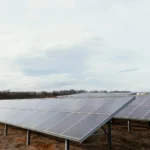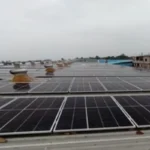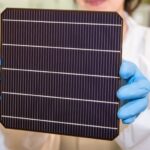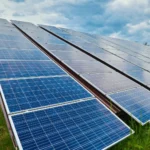Breakthrough in Solar Technology: 33.2% Efficient Perovskite-Silicon Cell
Breakthrough in Solar Technology: 33.2% Efficient Perovskite-Silicon Cell
Scientists at the King Abdullah University of Science and Technology (KAUST) claimed to have created a perovskite-silicon tandem solar cell with a record energy conversion efficiency of 33.2%.
The efficiency achieved at the KAUST Solar Center has been certified by the European Solar Test Installation (ESTI) and listed on the National Renewable Energy Laboratory’s (NREL) Best Research-cell Efficiency Chart.
Researchers combined perovskite top cells on industrially compatible, two-sided, textured silicon bottom cells to obtain the tandem solar cell.
They observed that the perovskite top layer absorbed blue light best, while the silicon foundation absorbed red light best.
The KASUT team has been working on how to uniformly cover the micrometer-sized pyramidal surface of silicon cells with perovskite material since 2016.
The scientists found that combining these materials increased the capture and conversion of sunlight into electricity more efficiently than the conventional single-junction silicon counterparts.
Professor of Material Science and Engineering and Interim Associate Director of the KAUST Solar Center Stefaan De Wolf said, “This new record is the highest power conversion efficiency of any two-junction solar cell under non-concentrated light, showing the great potential of perovskite/silicon tandems to deliver ultra-high performance photovoltaic modules, which is critical to quickly achieve renewable energy goals towards fighting climate change.”
The research is a major breakthrough in the field of solar energy at a time when market predictions estimate the tandem perovskite/silicon technologies will make up over $10 billion of the global photovoltaic market share by 2032.
The KAUST team is exploring scalable methods to produce industrial-scale perovskite/silicon tandem cells with areas exceeding 240 square centimeters.
The efficiency achieved by the KASUT team also surpassed the earlier record of 32.5% achieved by researchers at the Helmholtz-Zentrum Berlin for tandem solar cells.
Last month, Italy-based renewable energy company Enel Green Power, researchers at the National Solar Energy Institute, and the French Alternative Energies and Atomic Energy Commission claimed to have achieved a power conversion efficiency of 26.5% for a 2-terminal tandem perovskite solar cell.
Suggested Articles

100 kW Solar Power Plant Cost in Haryana: The Ultimate Guide to the Best Rate Per Watt
Explore the 100 kW solar power plant cost in Haryana for 2025. Learn about pricing, government subsidy options, and how much you can save with solar energy.

How to Choose Solar Panel Mounting Structures for Home, Industry & Commercial Installations
Choosing the right mounting structure is crucial for solar panel efficiency and durability. This blog explains various types of mounting structures for residential, industrial, and commercial solar installations, including rooftop, ground-mounted, and hybrid systems, to help you make an informed decision.

Perovskite: Future of Solar Cells
Discover how solar batteries store excess energy, maximize your solar system’s efficiency, and provide reliable power during outages. Learn about the types, benefits, lifespan, and maintenance tips to make the most of your solar investment.

Latest Solar Mounting Structures: Smarter, Stronger, and More Efficient
Learn how the latest solar mounting structures in 2025 improve efficiency, reduce costs, and power the future of solar installations.

Solar Inverters India: How to Choose the Best for Your Solar System
India’s solar market offers a wide range of inverters, making selection challenging. This guide explains key factors to consider, helping users choose the right inverter for residential, commercial, and industrial solar projects effectively.

500 kW Solar Power Plant Cost in UP 2025 | Latest Price, Subsidy & ROI
Thinking of setting up a 500 kW solar power plant in Uttar Pradesh? Discover the 2025 cost estimate, available subsidies, and expected ROI. Learn how commercial and industrial projects in UP can reduce energy expenses and achieve long-term savings with solar energy.

Industrial Solar Plants with Diesel Generator Backup: What You Need to Know
Discover how industries can efficiently run rooftop solar plants alongside diesel generators (DG). Learn the benefits, setup tips, and hybrid system strategies to ensure uninterrupted power and maximize energy savings.

Are Colleges and Schools ready to take up Solar challenge?
Adopting solar energy can help schools and colleges reduce electricity costs and promote sustainability. This guide explores how educational institutions can implement rooftop solar projects, the benefits, and what steps are needed to take on the solar challenge effectively.